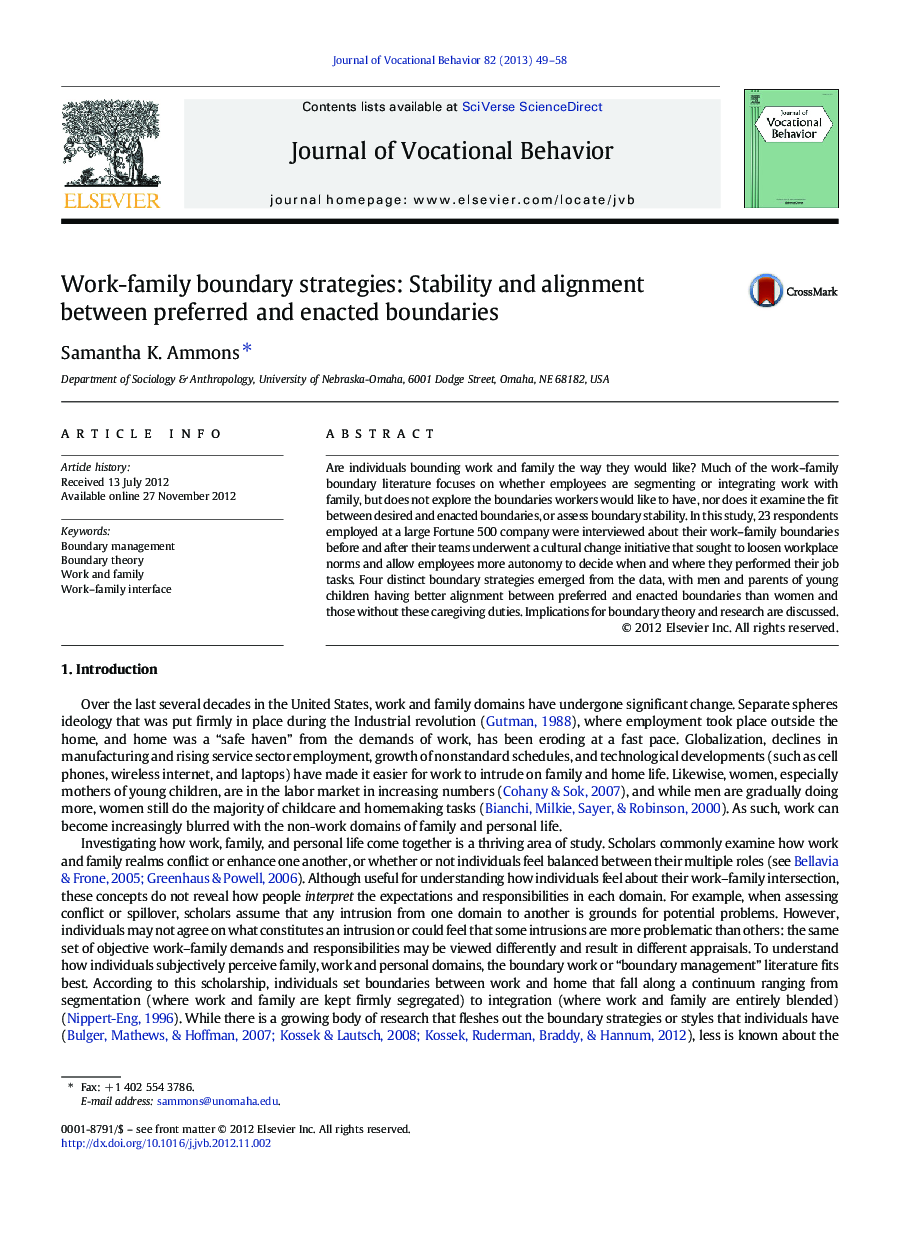| Article ID | Journal | Published Year | Pages | File Type |
|---|---|---|---|---|
| 887042 | Journal of Vocational Behavior | 2013 | 10 Pages |
Are individuals bounding work and family the way they would like? Much of the work–family boundary literature focuses on whether employees are segmenting or integrating work with family, but does not explore the boundaries workers would like to have, nor does it examine the fit between desired and enacted boundaries, or assess boundary stability. In this study, 23 respondents employed at a large Fortune 500 company were interviewed about their work–family boundaries before and after their teams underwent a cultural change initiative that sought to loosen workplace norms and allow employees more autonomy to decide when and where they performed their job tasks. Four distinct boundary strategies emerged from the data, with men and parents of young children having better alignment between preferred and enacted boundaries than women and those without these caregiving duties. Implications for boundary theory and research are discussed.
► Workers employed within a Fortune 500 company were observed and interviewed. ► The company was undergoing an internal cultural change initiative. ► Desired and enacted work–family boundaries were examined. ► Boundary stability and boundary fit were assessed. ► Boundaries were relatively stable among men and those with young children.
